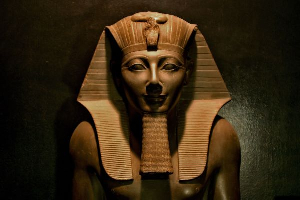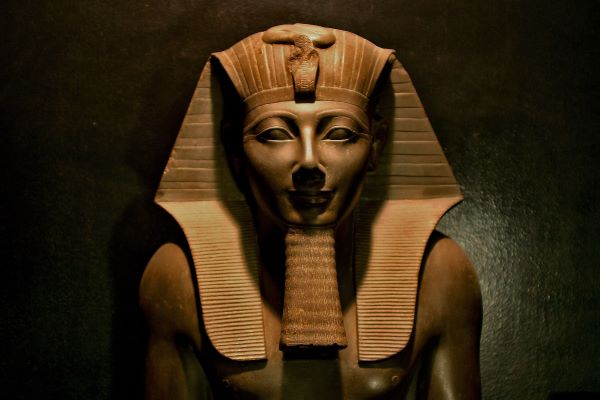 Egyptian Pharaohs dating back to the early centuries had Akan names, according to the Hemanhene
Egyptian Pharaohs dating back to the early centuries had Akan names, according to the Hemanhene
Hemanhene Nana Apau Wiafe Ababio Sanwoansan has drawn a connection between the Akan ancestors and the Egyptian Pharaohs, suggesting that some of these ancient structures bear Akan names.
According to him, in an interview video shared on Facebook on July 16, 2025, where he recounted one of his travels, he was shown the gravesites of several buried Pharaohs.
He claimed that the names of these Pharaohs had Akan origins — slightly altered to sound non-Akan, yet basically rooted in Akan language and culture.
“They said a Pharaoh named Akuffo had been buried there. The white man is clever; he altered the spelling slightly so that you and I wouldn’t recognise the origin of the name Akuffo. They also took me to another place where the Pharaoh buried there was named Akhenaten, which in a way, is actually ‘Akenten’.
“I was shown another site where the Pharaoh buried there was also named Tutu Ankama, though they had spelled it Tutankhamun. I observed very closely and carefully so I paid very close attention to everything because I realised that much of what they were showing me belonged to my forefathers,” he recounted.
Nana Apau Wiafe Ababio Sanwoansan further highlighted similarities between the Akans and the Egyptian Pharaohs, citing one such example as the posture of Pharaoh statues — with arms crossed over the chest to signify death.
He explained that this symbolism resonates with Akan beliefs, where the deceased are traditionally laid to rest with their arms crossed over their chests.
This parallel, he noted, strengthens his confidence in the cultural linkage between the two groups.
“They took us to a three-storey building filled only with mummies and caskets. We were told that if we saw any statue with its arms crossed over its chest, (just like I’ve crossed mine), it meant that the Pharaoh had already passed away at the time the statue was made. He was no longer alive. I also recalled that our ancestors used to say that when a person dies, their arms are crossed over their chest. All of this suggests to me that there are similarities.
“Then I came to my senses and saw a coffin, the colors of which bore a striking resemblance to picture of Otumfuo dressed in the same kente cloth. I made some comparisons and once everything was over, they threw a party for us. I spent about ten days there and during the dinner, we were asked to share the experiences we had gathered from the expedition. I told them that based on everything I had seen, I could infer that my forefathers lived here.”
The chief said he saw a lot of products at the museum that bore a resemblance to a lot of things that the Akans hold today as traditions.
“Imagine meeting African-Americans and people from all over the world and then claiming that all the artefacts found there belonged to my forefathers. It was quite surprising. The host asked me why I was making such a claim, and I explained that from the little historical research I had done, I had discovered that the Akans once lived here, along with the Anlo and Ga people, though the Akans played a particularly significant role,” he said.
He also noted with confidence that some Ghanaians had lived in the area because the objects that are in the area resonate with the Ghanaian culture.
“We all lived there before the arrival of King Leopard I, and later, the Romans and Arabs settled in that area. We coexisted for about 400 years before conflicts broke out, prompting us to leave for Mali, where the Old Ghana Empire was eventually established.
“So, I said to the man, ‘Everything I’m telling you stands as evidence that the Akans once lived here.’ However, what I wanted to show you – to help you understand, I showed them a picture of Otumfuo in his full regalia. I pointed to the ornament around his neck and told them that it represents our forefathers. When we left the old Ghana Empire, we trekked through until we reached what is now present-day Ghana,” he said.
He, however, noted that when Ghanaians were leaving that settlement, they couldn’t carry everything with them.
“When our forefathers arrived and established the kingdom, they said to themselves that even if they couldn’t bring the pyramid with us, they would symbolically carry it around their necks. They tried – had it been something movable, they would have brought it along. But since they couldn’t, they chose to represent it as an ornament around their necks,” he said.
Watch the video below:
MAG/AE
Meanwhile, watch what Jane Reindorf Osei says about Ghana’s readiness for tourism investment:


